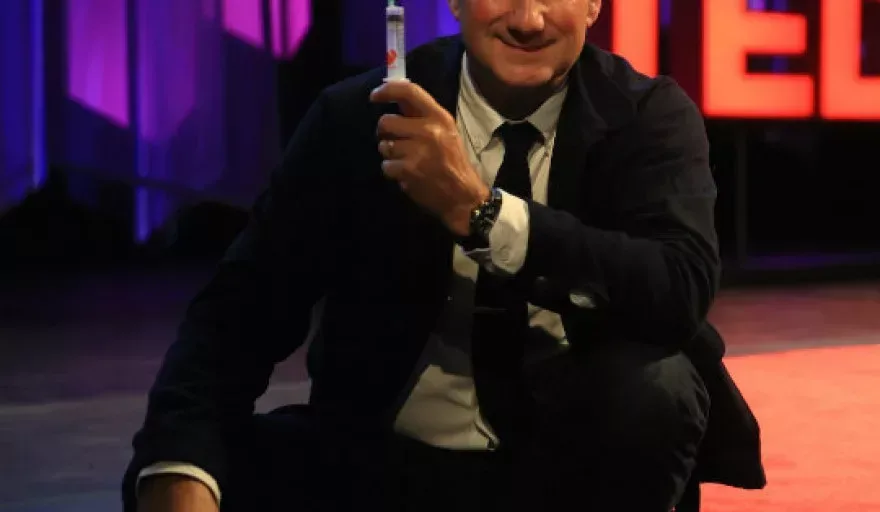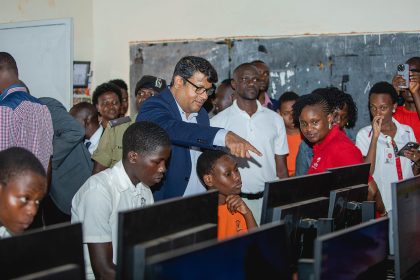Marc Koska OBE is on the verge of realising an ambition that has been the focus of his efforts for more than 20 years, introducing his LifeSaver auto-disable (AD) syringe to save as many as five million lives around the world every year.
Usable only once, reducing the reuse of syringes will have a significant impact on the spread of diseases, especially in less developed countries, and following years of development, Koska is now putting pressure on traditional manufacturers to stop resisting and to aid him in his plight.
Having successfully introduced his K1 and K3 syringe to the global consciousness alongside the World Health Organisation (WHO) in Geneva, the British inventor is now planning to capitalise on the global recognition that his brainchild is receiving, and the reformative initiative that is now in place, to address some of the most long-standing and serious healthcare issues in Africa.
Africa Outlook caught up with the man himself on the eve of his battle with conglomerate syringe manufacturers and the trip that could kickstart a healthcare revolution on the continent.
Q&A WITH MARC KOSKA
Could you firstly introduce yourself, your background within the healthcare industry and your key roles within the sector at present?
Marc Koska (MC):My name is Marc Koska. I am an inventor of auto-disable medical devices, and have spent 20 years campaigning against the re-use of syringes globally –the ninth biggest cause of death every year. This week, finally, the World Health Organisation agreed to launch a global policy that will change all curative needles to Auto-disable by 2020.
Could you talk me through your role as ambassador with the WHO?
MC: I’m not officially an ambassador – more of a large flea in their ear. By their nature, the centralised bureaucratic structures that lead policy on global health are not the most agile or fast moving animals, and they can seem frustratingly stolid and resistant to change.
This is because they have to answer to an enormously complex constituency, and so I don’t actually want to knock them. After all, they’ve just launched a watershed policy – their third in 67 years – that will make it very difficult indeed for any UN agency to fund a health system in the world that hasn’t almost totally switched to auto-disable syringes by 2020.
What the WHO can’t do is get immersed in is commerce, for understandable reasons avoiding accusations of corruption. So this is where my 20 years of commercial activity, persuading manufacturers to switch their capacity to auto-disable products, can be invaluable. The private sector can be so much more agile and innovative, but together with the policy makers of central office, there is a very, very powerful lever. Industry couldn’t solve the problem without WHO policy creating or re-shaping the market.
Once we have set the manufacturers on a course of fulfilling the future capacity needs, I will turn my attention to helping build a modern global public safety campaign, to educate both healthcare workers and patients. We’re going to call this our LifeSaver campaign.
What is the technology and ideology behind the K1 syringe?
MC: The most important aspect of the K1 is that it can be made for the same cost as a re-useable syringe, and on the same machinery – to give it the broadest possible market. Other more expensive AD patents are available, but they can’t be afforded by national health systems that will deliver most benefit.
The technology is quite simple in essence; an annular bezel ring within the barrel that stops the plunger being drawn back once the injection has been made – breaking the plunger off.
The WHO policy also pertains to needlestick prevention devices, and again my K-3 design is a simple design – to allow the most cost-effective and therefore broadest procurement and use.
What are the main benefits of your auto-disable syringes?
MC: Syringes are the loss-leader of global medical procurement. As the lowest profit margin and most common medical protocol, ministries of health are used to receiving vast discounts on their syringes, if they then buy a manufacturer’s other products. Because the K1 and K3 together will be the most affordable solution to achieving switchover, we foresee benefits to patients across the world.
And because the WHO cost-effectiveness study states for every dollar spent on AD products, a health system will save on average $14.57, the health systems themselves will benefit massively, becoming robust and sustainable.
At what stage are you currently in presenting this to the mainstream healthcare sector and how do you hope/expect to see the development of this product manifest over the course of 2015?
MC: The world’s manufacturers have just had a two day meeting with the WHO in Geneva, so the starting gun has just fired for the 60 month challenge to switchover 18 billion syringes a year from reusable to auto-disable. Our task now is to create momentum behind our LifeSaver campaign – a generic campaign for any Auto-Disable syringe – and catalyse that manufacture process. Once capacity is on course, we must start a global education process for both healthcare workers and patients alike.
What is your strategy in terms of unveiling your K1 syringe during your imminent trip to Africa?
MC: Considering AD syringe use has been shown to reduce the average hospital stay from seven days to three days in Africa, this is a revolutionary moment in African healthcare. The key is capacity. We have plans afoot to achieve both sustainable manufacture capacity and education; the last two key elements of achieving universal safe syringe use.
If significant African manufacturing capacity exists twinned with modern distribution hubs, we can reduce the logistic supply chain difficulties that have dogged much healthcare delivery in the developing world.
We will be announcing a raft of new manufacturing projects in 2015 across the continent, to create a steady capacity of LifeSaver K1 and K3. The cost benefit to African healthcare is estimated to be more than $1 billion a year in downstream healthcare costs.
Looking to the future, what do you hope to be able to report back in terms of the success of your invention and the impact that it has on the African healthcare industry?
MC: If infection control is re-introduced as a bedrock of a national health system, health delivery and demographic health improves existentially. For instance, 20 percent of Egyptians were infected with Hepatitis C by their doctors! Imagine if that hadn’t happened! A healthy population is a more productive population – this is another step to a sustainable African future.



























